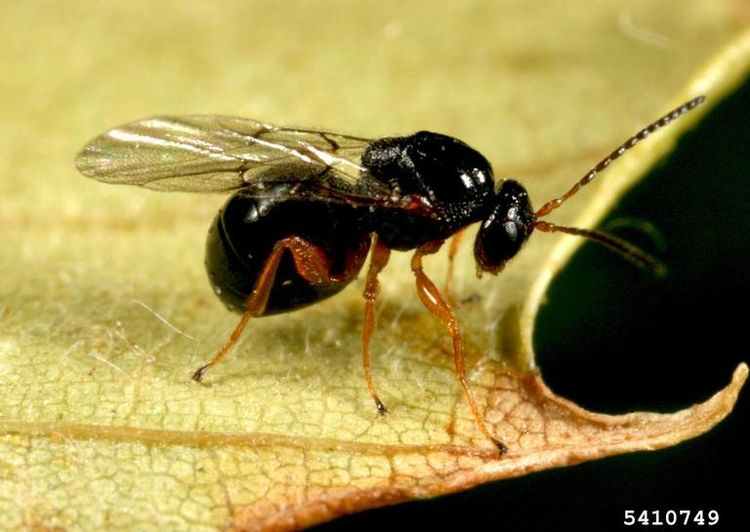
Feb 8, 2022Research sheds light on Asian chestnut gall wasp in Michigan
The free Michigan State University Extension bulletin E3457, “Asian Chestnut Gall Wasp: An invasive pest of concern for Michigan chestnut growers” provides information on pest biology, impact and management options. Chestnuts (Castanea spp.) are grown and consumed by people around the world.
While many people in the United States enjoy freshly roasted chestnuts in the winter, chestnuts are also used in a variety of products including gluten-free flour, beer, liquor and candy. The United States imports the vast majority of its chestnuts, but domestic production is steadily expanding. Michigan is the largest commercial producer of chestnuts in North America.
Unfortunately, the Asian chestnut gall wasp (Dryokosmus kuriphilus Yasumatsu) was discovered in Michigan in 2015. This tiny insect, a native of China, is a major invasive pest of chestnut trees in Japan, Korea, much of Europe and the United States. At high densities, the spherical galls caused by the Asian chestnut gall wasp can reduce tree growth and nut production. This invasive pest will continue to spread and could become a serious problem for commercial chestnut producers across the state.

Asian chestnut gall wasp feeding causes the development of small galls (0.25 to 0.75 inch in diameter) on the current year’s growth. Galls take on an orange-red appearance, but eventually dry out and become woody. Old galls persist on trees for multiple years. While leaf galls usually have little impact, galls that form on current-year shoots can affect chestnut tree vigor and nut production. Apical galls, which form at the tips of shoots, may be especially damaging. They reduce shoot elongation and can inhibit flower production, which reduces nut formation. Chestnut producers in Japan, Korea, several European countries, and some U.S. states have reported yield reductions following an Asian chestnut gall wasp invasion.
Asian chestnut gall wasp was detected in two chestnut orchards in southwest Michigan in July 2015, and additional infestations continue to be discovered. As of July 2021, the Asian chestnut gall wasp had been found in chestnut orchards in at least six additional southwest Michigan counties.

For more information, download the free MSU Extension bulletin E3457, “Asian Chestnut Gall Wasp: An invasive pest of concern for Michigan chestnut growers.”
– Erin Lizotte, Michigan State University Extension
Photo at top: A tiny adult Asian chestnut gall wasp, shorter than a grain of rice. Photo: Gyorgy Csoka/Hungary Forest Research Institute/Bugwood.org.









